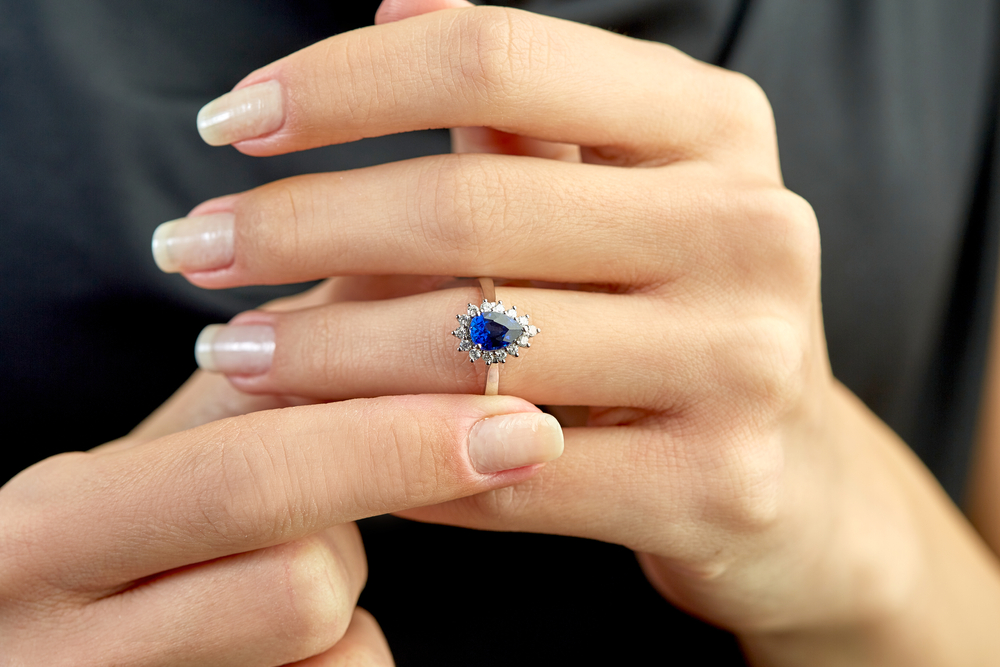7 Hidden Dangers of Wearing a Ring While Working Out
Whether you are smashing personal bests on the treadmill or lifting heavy at the gym, your engagement or wedding ring might be facing more danger than your muscles.
The jewellery experts at Angelic Diamonds warn that wearing your precious ring during workouts risks costly damage, germ buildup, and even serious injury to your fingers.
Here are seven reasons to always take off your engagement and wedding rings before working out:

- Your Ring is a Magnet for Gym Germs
Angelic Diamonds recently surveyed 2,000 ring owners and discovered that 66% never clean their jewellery, despite expert advice to do so at least every six months. Add sweat, dirt, and grime from gym equipment, and your ring quickly becomes a breeding ground for bacteria.
Gyms are notorious hotspots for bacteria and fungi, with sweaty surfaces and close contact making infection easy. Your ring traps sweat, dead skin cells, and bacteria from everything you touch, which can lead to irritation, rashes, or worse.
Neil Dutta, Managing Director of Angelic Diamonds, explains, “Jewellery worn during exercise collects bacteria that can cause skin redness, rashes or infections. If your skin around the ring starts to look sore or inflamed, it is a clear sign to give your ring a break and clean it thoroughly.”
- Gym Equipment Can Seriously Damage Your Ring
Metal dumbbells, kettlebells, and barbells are tough, but your ring is not. Even softer metals like gold or platinum can get scratched, bent, or dented through repeated contact.
Neil warns, “The constant gripping and friction during workouts weakens the ring’s band and can loosen stones. Damage may not be obvious straight away, but it builds up quickly over time.”
- Diamonds Are Hard But Not Indestructible
Diamonds may be the hardest natural substance, but they can chip or crack if hit hard enough, and gyms are full of hard surfaces.
“Even the toughest stones can chip if knocked against metal or concrete,” Neil explains. “This risk is even higher for rings with softer gemstones like sapphires or emeralds.”
- Swollen Fingers Make Rings Painfully Tight
Exercise boosts blood flow and can cause fingers to swell. A ring that fits perfectly at rest might become too tight mid-workout, making removal difficult or even painful.
Neil notes, “Swollen fingers combined with tight rings are a common cause of emergency visits to A&E. It is an avoidable risk if you remove your ring before exercising.”
- The Real Danger: Ring Avulsion Injuries
Ring avulsion happens when a ring catches on equipment and forcefully pulls on your finger, causing serious damage to skin, tendons, or bone. Tens of thousands of these injuries are reported annually, many in gyms or during sports.
“This is a severe but often overlooked risk,” says Neil. “Ring avulsion can cause permanent damage or require surgery. The safest choice is to always take rings off before any physical activity.”
- Sweaty Hands and Movement Put Your Ring at Risk of Being Lost
Sweaty fingers and vigorous movements can turn your ring into a slippery escape artist. Even slightly loose rings can slip off unnoticed during exercise, and once lost, finding them in busy gyms or outdoor areas is almost impossible.
“Losing an engagement or wedding ring is heartbreaking,” Neil says. “Sweat and motion make it much easier to lose your ring during workouts, so taking it off is a small step that saves a lot of stress.”
- Gym Sweat, Dirt and Chemicals Can Harm Both Your Skin and Rings
Gym sweat is not just salty water, it contains oils, dirt, bacteria, and residues from cleaning chemicals used on equipment. All this can build up under your ring, causing irritation or infections.
Plus, dirt and sweat trapped in the ring’s crevices dull its sparkle and speed up wear on metals and stones.
“As our survey showed, most people don’t clean their jewellery regularly, allowing these buildups to go unchecked,” explains Neil. “Removing your ring during workouts and cleaning it regularly protects both your skin and your jewellery.”
How High-Intensity Training Is Even Riskier For Your Rings

Trends like CrossFit, HIIT, weightlifting, and functional training are booming. These workouts often involve fast movements, gripping, and heavy lifting, all prime for causing jewellery damage or injury.
Neil comments, “High-intensity training is fantastic for fitness, but tough on rings. The combination of heavy weights and rapid motions increases the chance of your ring getting caught, knocked, or damaged. Functional training especially involves equipment and grips that can easily snag jewellery, so it is simply safer to leave rings at home during these sessions.”
Top Hygiene Tips for Gym Lovers
Neil has also shared his top tips:
- Always remove your engagement or wedding ring before exercising.
- After you work out, wash your hands and use antibacterial soap.
- Clean your jewellery every six months professionally, and wipe it down regularly at home.
- Store rings safely to avoid accidental damage.
- Notice any damage or looseness? Visit a jeweller immediately.
- For those who want to keep a ring on, silicone or resin alternatives made for fitness can be a safer choice.





